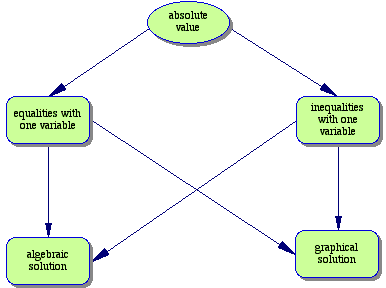
Journals 2007
Notes
Literature
Mathematics
Technology
Birding
ModelTrains
Philosophy
Psychology
Science
History
Time

Journals 2007
Notes
Literature
Mathematics
Technology
Birding
ModelTrains
Philosophy
Psychology
Science
History
Time
It is +12 C with a high forecast of +20 C. Sunrise 6:14 Sunset 20:59 Hours of daylight: 14:45
We had a good morning walk to Tim Horton's for a coffee.
The main priority now will be to work on making the summary notes for my calculus learning.
| Immediate | Description | Time |
|---|---|---|
| Literature | Continue reading "Number 9 Dream" by | 1 hr |
| Mathematics | Continue ch. 1 of "A Transition to Advanced Mathematics" | 1 hr |
| Mathematics | Complete notes for week 1b & 2a of "The Humongous Book of Calculus Problems" | 2 hr |
| Mathematics | Continue reading "The Black Swan" by Nassim Taleb | 1 hr |
Session 3 (Week 2a)
Chapter 1 Linear Equations and Inequalities
Section 1.3 Absolute Value Equations and Inequalities
1. Activities
W. Michael Kelley (2006). The Humongous Book of Calculus Problems.
Complete problems 1.21 - 1.27 [p. 8 - 10]
Wayne W. Dyer (2007). Change Your Thoughts - Change Your Life.
Read Verse 3: Living Contentment [p. 13 - 18]
2. What's it all about?
This section describes solving equations and inequalities that involve the absolute value of an expression involving one unknown variable.
3. What am I able to do, now that I am finished this section?
I will be able to solve equations involving the absolute value of an expression involving one unknown.
I will be able to express the solution to an inequality involving an expression involving one unknown either algebraically, using interval notation and graphically.
4. What will I know?
I will understand the nature of the absolute value of an expression involving one unknown.
I will have a clear image of the geometric interpretation of an inequality involving an absolute value.
5. What are the key concepts?
6. What are some relevant Web sites for this material?
Using your favorite search engine, and maybe one or two others, type in a few key words such as "absolute value equations " or "absolute value inequalities".
Here are six Web sites that I liked:
7. What concept map can I create for this section?

8. What types of Mathematica activities can I create?
This is useful if one is trying to learn more about some of the defined functions of Mathematica. It is also worthwhile if one is trying to see how one can use the absolute value function to obtain a graphical representation of a complex inequality.
Here is a Mathematica Notebook for this section.
9. What are some connections to other ideas?
The idea of interpreting the absolute value of an expression as a measure of the distance is useful.
10. What is my overall reaction to this section?
One must be very careful and meticulous when approaching this type of problem. It is very easy to forget the importance of both positive and negative values.
11. Comments on Dyer: 3. Living Contentment
Dyer suggests that the third verse of the Tao Te Ching implies that one should "bring happiness to every encounter in life". Try this advice when approaching any mathematics problem. Start off with the assumption that each problem is an opportunity to think, and that thinking is itself is an enjoyable activity. If the problem still leaves you confused, view this as an opportunity to learn something new. Once again, this is a positive event that allows you to grow. Fantastic. Every day is full of such opportunities.
I will focus on working on the summary notes for the previous sections. I have already added some material to yesterday's notes for Session 2 (week 1b). Here is a list of what I have accomplished so far:
Using the timetable I have set up, this table shows that it should take me 8 weeks to complete the first 4 chapters. I began this on July 16. That is four weeks ago. Thus I am well ahead of schedule in terms of solving the problems but am well behind on the summary notes, which I only began a couple of days ago. If I maintain the same pace of a section a day, I should be up to date in another 4 weeks and will be on schedule for the overall timetable. Great.
I will try to continue working on the problems as well, but the emphasis will shift to bringing the notes up to date and getting myself in synchrony with problems and notes.